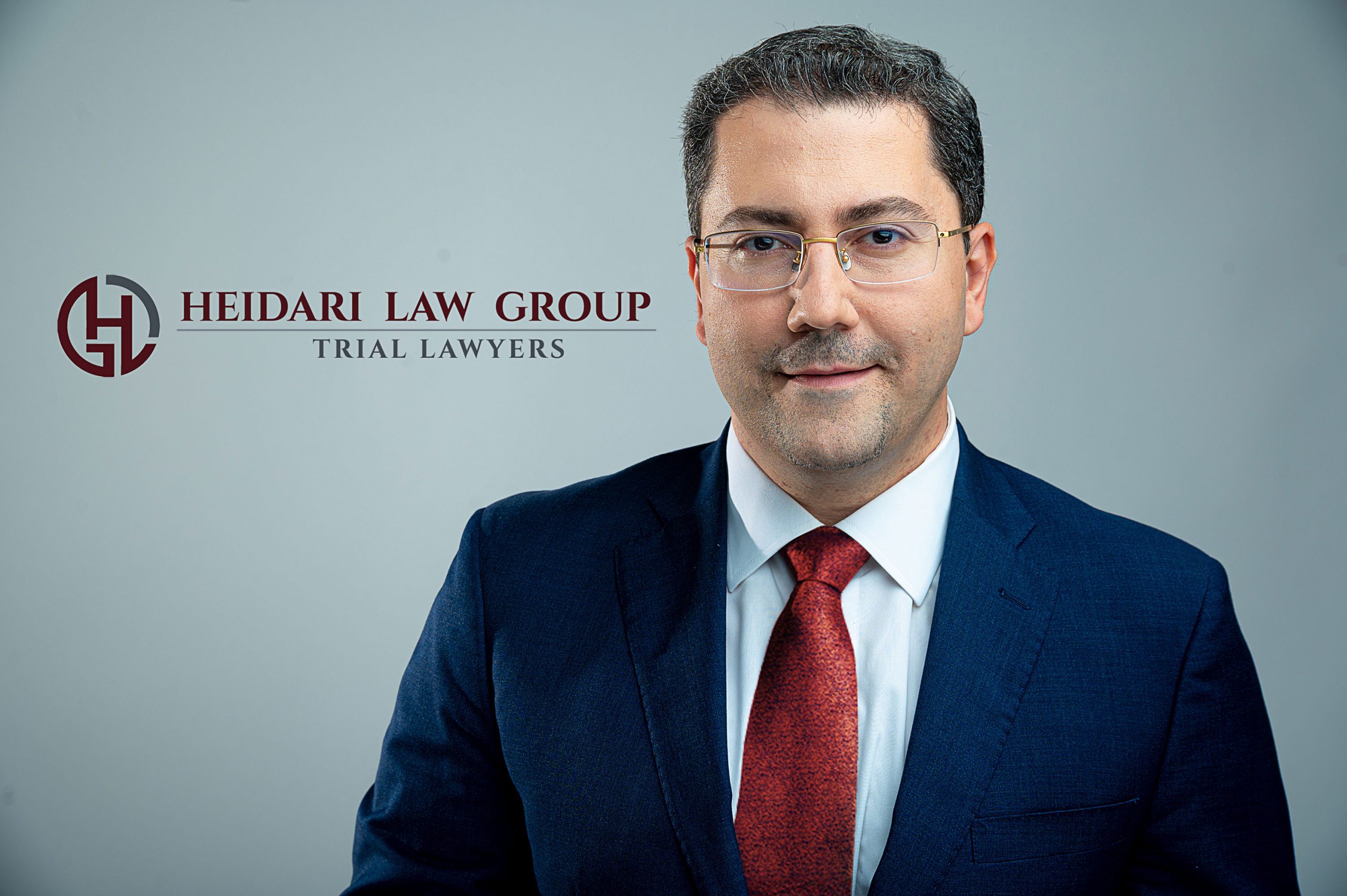Almost everyone’s first thoughts when getting into a car accident is: what should I do next? Accidents that involve rear ending one another is one of the most common car accident types. According to the Insurance Information institute, 7% of accident fatalities are caused by rear end accidents. If you or a loved one have been involved in a rear end accident, call our experienced accident attorneys at Heidari Law.
How a Rear End Accident is Caused
A rear end accident occurs in several ways. Some examples include:
- The first car slows down, the second car comes from behind ant an exceeding speed, and fails to stop in time.
- The first car fails to move forward when the light turns green, and the second car slams onto their gas, prepared to move forward.
- A traffic light is on the verge of turning red, and a car speeds up to make the light. The car in front comes to a stop, anticipating the red light.
- A driver is looking down and texting, while the car in front is slowly coming to a stop at a red light.
- The car behind does not notice the car in front of them has a turn signal, and assumes they will go forward. When the front car slows down to make a turn, the other car comes at an exceeding rate from behind.
In situations described above, the car behind is probably at fault. The court will need extrinsic evidence to further determine fault. Circumstances could change on a case-by-case basis. The best way to prevent any rear end collisions are to avoid any distractions (eating, drinking, texting, etc.) while driving, and to adhere to the two second rule.
Two Second Rule
A two second rule is a rule of thumb that drivers are advised to adhere to. The driver should stay two seconds behind any vehicle that is ahead of him. These two seconds refer to the reaction times needed to brake in case the car in front decides to come to an abrupt stop. The two seconds are the minimum numbers of seconds needed to stay behind a car. If a car is behind another for less than two seconds, it is highly likely that the car behind will not have enough reaction time to come to a safe stop. It is advised to maintain a four second rule when road conditions are unsafe, such as during heavy rains.
Sometimes, a rear end collision can be caused by the negligence of both drivers. In these cases, the damages for both drivers could be lessened depending on their jurisdiction, and percentage of fault. These situations include, but are not limited to:
- The car in front slams on their brakes suddenly, and without good cause. The car behind was driving to close, and hits the front car from behind. Here, the car in the front could be at fault for intentionally slamming on their brakes.
- The car in front has brake lights that do not work properly. The car behind cannot tell if the car in front is braking, and so rear ends the car in the front. Here, the car in front could be at fault for failing to repair their lights.
- The car in front fails to make a turn signal when turning. The car from behind assumes they are going straight, and rear ends the front car. Here, the car in front could be at fault for failing to use reasonable care and making a turn signal to alert other drivers they are turning.
- The car in front missed making a left turn and is now on the pedestrian walkway. The car in front reverses to get back into the lane behind the pedestrian walkway. The car comes speeding from behind and hits the car in front. Here, the driver in the front car could be at fault for stopping in the middle of the crosswalk during traffic, then reversing into oncoming traffic.
Tailgating
Tailgating is one of the most common problems drivers report witnessing when driving. It occurs when a car from behind is close to the car in the front. The car in the front could get agitated or nervous. Many even report getting annoyed and wanting to slam on the brakes. In a survey done by media news outlet The Sun, when asked about what they would do if a car tailgated them, 37% reported they would slow down, 34% reported they would brake, and 11% said they would speed up. Others reported more serious and aggravated responses, including 10% reporting they would slam abruptly on the brakes so the car behind could hit them, and 7% said they would make an inappropriate hand gesture.
Comparative Fault and Contributory Fault Jurisdictions
The amount one could receive for damages depending on the jurisdiction they are in. Each state follows a different form of fault liability. For example, a comparative fault jurisdiction determines the percentage each party is at fault, then determines the decreased number of damages proportionate to the fault. Under contributory liability, a plaintiff may be unable to collect any damages if they were found liable for the slightest percent.
For example, if the plaintiff is determined to be at fault for 40% in the rear end accident, and their damages are $10,000.
- In a comparative fault jurisdiction, plaintiff would be able to collect $6,000 in damages.
- In a contributory negligence jurisdiction, plaintiff would recover nothing.
Fault In a Rear End Accident
- Tailgating (as described above)
- Distracted driving: this includes eating, drinking, and texting. Other common distractions including putting on makeup or changing the radio station.
- Weather: when there is fog or rain, the road conditions become dangerous, and drivers should maintain a lower safer speed.
- Sudden brake: a stop can happen suddenly, especially when there is an object in the road. This is why drivers should constantly be mindful of their surroundings.
- Blind spots: many drivers do not make an attempt to constantly check their blind spots. Drivers must also want to avoid being in any car’s blind spots.
Injuries Sustained in Rear End Accidents
Rear end accidents are one of the most dangerous type of accidents. Common injuries include:
- Back injuries
- Shoulder injuries: this usually occurs from the seatbelt pulling the driver back abruptly
- Face injuries
- this can happen when shards of glass from the windows fly around after an accident
- when an airbag does not turn on, a person may also slam their head into the steering wheel
- Whiplash: this occurs when the spine has been violently moved at an abrupt period of time
- Fatalities
To better determine if you have a valid rear end accident case, contact our experienced car accident attorneys at Heidari Law Group today. We have attorneys in major cities, such as Los Angeles, Las Vegas, Fresno, and Irvine.
Call our office at 1 (833) 224 5454 to schedule a free consultation.
***Disclaimer: This blog is created by Heidari Law Group for educational purposes. This article provides a general understanding of the law. It does not provide specific advice. By using this site and reading through this blog, there is no attorney-client relationship created between you and any member of Heidari Law. Further, due to the constant change of the law, some parts of the information above may no longer be good law.



